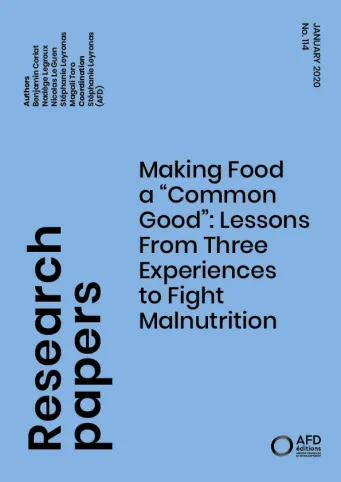Share the page
Making Food a “Common Good”: Lessons From Three Experiences to Fight Malnutrition
Published on

Food supply is caught in a powerful paradox. The right to food is one of the most established and codified human rights. However, almost a billion people – one person out of nine – currently suffer from malnutrition. There are essentially three explanations to this. First, hyper concentrated and highly capitalistic food markets are in no way oriented in order to satisfy essential needs. Second, property right in its exclusive form, as it stems from free trade agreements, exercises a primacy and domination on social rights. Last, the subject towards which international law is directed is not the person (to which the right to food is theoretically attributed) but the national State.
This situation explains why new considerations are being affirmed: it is time to make food a “common good”. This new narrative, supported by multiple actors, puts the question of access at the center of attention. It means drawing out the conditions for the institutionalization of the right to food. It also implies that we must leave behind the illusion that the realization of the right to food can solely rest on the goodwill of States. In this sense, it signifies that we must work to promote multiple initiatives such as those carried out in civil society.
Three examples of initiatives that fight against different forms of malnutrition (Nutriset, Misola and Nutri’zaza) feed into this work. They allow us to shed light on three aspects that must be taken into account in order for these entities to be considered contributors to the right to food and the promotion of food as a common good. The first aspect that we study concerns the conditions (price policies, fabrication and distribution modalities) in which food is produced and made available. The second revolves around the way in which these initiatives make use of the different attributes of property right in order to facilitate (or not) the access to food. The third consideration stems from the form that such entities take, and how these forms help them to comply with the objective of facilitating access to food for the most fragile populations.
Useful Information
-
Authors
-
Benjamin CORIAT, Nicolas LE GUEN, Magali TORO, Stéphanie LEYRONAS
-
Coordinators
-
Stéphanie LEYRONAS
-
Edition
-
114
-
Number of pages
-
29
-
ISSN
-
2492 - 2846
-
Collection
-
Research Papers
-
Other languages
